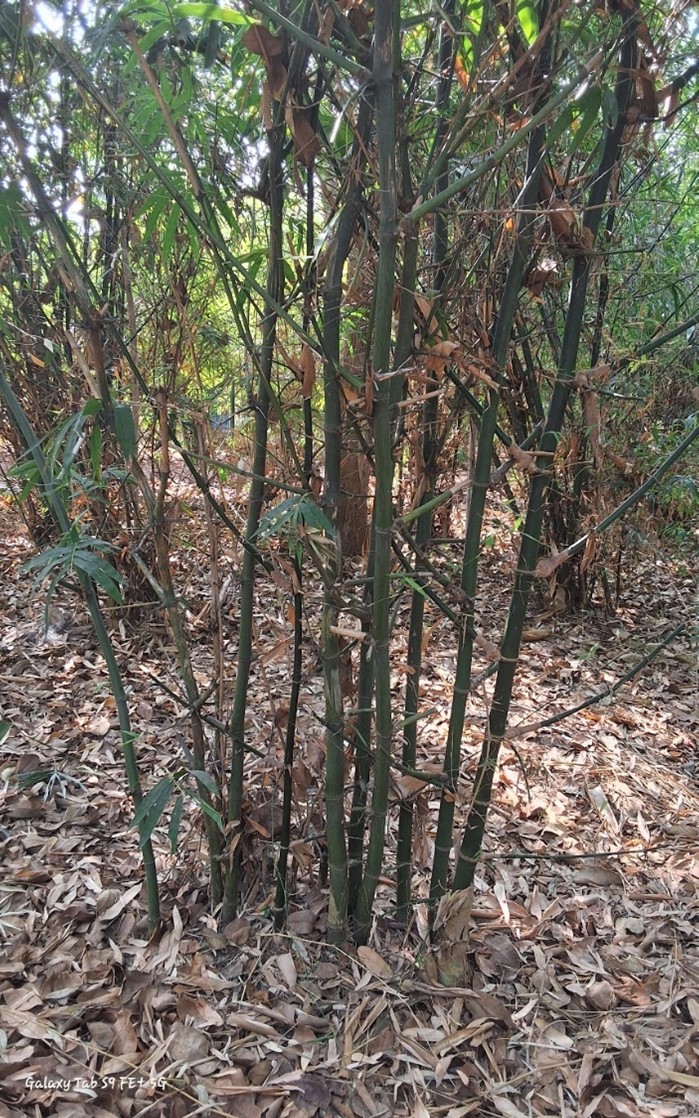Bambusa balcooa

Bambusa balcooa
Bambusa balcooa, also known as Male Bamboo in English, is a significant member of the Poaceae family, native to the northeastern regions of India. It is locally referred to as Baluka in Assam and Arunachal Pradesh, Balku Bans in Bengal, Barak in Tripura, and Bhalu Bans in Nagaland. This species thrives in moist deciduous forests at elevations up to 600 meters, with its natural distribution spanning Assam, West Bengal, Bihar, Eastern Uttar Pradesh, and Orissa. It has also been introduced to Nepal and Bangladesh.
This caespitose, clumping bamboo typically grows to a height of 16 to 23 meters, with culms measuring 8 to 15 cm in diameter. The culms are grayish green, and the internodes vary in length from 20 to 45 cm. The culm sheaths are green when young, tapering above and rounded at the tip. They are deciduous, with the adaxial surface being glabrous and the abaxial surface densely covered with appressed dark brown hairs. The sheath margins are ciliate. The leaves of Bambusa balcooa are oblong lanceolate in shape, measuring 15 to 30 cm in length and 2.5 to 5 cm in breadth.
Bambusa balcooa thrives in heavy-textured soils and requires an annual rainfall of approximately 1200 to 2500 mm for optimal growth. It is well-suited to warm, humid climates, making it a vital bamboo species for both ecological and economic purposes in its native and introduced regions.
The inflorescence of Bambusa balcooa is characterized by large panicles bearing spikate branches with bracteate heads. These measure 0.6 to 1.2 cm in length and 4 to 6 mm in breadth. The empty glumes are ovate, acute, and many-nerved, while the flowering glumes are larger and exhibit ciliations along their edges. The stamens are hardly exserted, with glabrous anthers and a hairy style. The flowering cycle occurs once every 35 to 45 years, and flowering was reported in regions such as Uttar Pradesh, Manipur, and Bangladesh between 1983 and 1988. Seed production is rare, making vegetative propagation through culm cuttings and tissue culture the preferred methods.
Bambusa balcooa is highly valued for its diverse applications. It is extensively used in the construction of houses, boats, electric poles, and scaffoldings due to its strength and durability. The culms are also employed in the production of agarbatti sticks, ladders, frames, and materials for the pulp and paper industries. Additionally, its edible shoots are a popular food source, adding to its economic significance.
Listen Audio:
Need assistance? BRTC Faculty